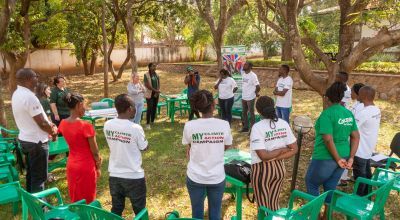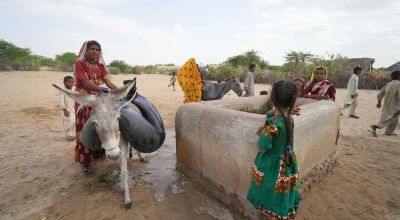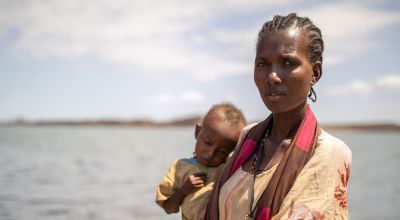
Read our 2023 annual report

Knowledge Hub
Here's what you need to know about the 2023 United Nations Climate Change Conference.
It sounds like the beginning of a joke: a tech millionaire, the Prime Minister of Barbados, the King of England, and the Pope walk into a climate change conference…
For nearly three decades the United Nations has been bringing together almost every country on earth for global climate summits called the Conference of the Parties (or COP). In that time climate change has gone from being a fringe issue to a global priority. And the need for COP28, which runs 30 November to 12 December in Dubai, is more serious than ever. Read on to learn why – and everything else you need to know about COP28.
What is COP and why is it important?
The Conference of the Parties (or COP) is the decision-making body of the United Nations Framework Convention on Climate Change (called the Convention for short). All states that are party to the convention are represented by COP, which is the central event in the UN’s annual Climate Change Conference. At each of these conferences, COP’s members review the status of the Convention and negotiate further actions and measures.
For the Convention, the ultimate goal is to prevent the rise of global temperatures above 1.5 °C (relative to the pre-industrial levels).
“They’re really important moments of accountability with increased public and media attention.”
“COPs are an important way to discuss how to prevent the working impacts of climate change,” says Concern Advocacy Manager Sally Tyldesley. “They’re really important moments of accountability with increased public and media attention.”
Tyldesley adds that COP has grown “much bigger than the negotiations themselves.” This year, more than 70,000 people representing 200 nationalities are expected to travel to Dubai for nearly two weeks of events, including world leaders, government delegations, scientists, business leaders, activists, journalists, lobbyists, and – yes – Pope Francis. Beyond the main conference of parties, there are additional events, talks, meetings, and even protests that will all cast a large spotlight on the state of our global climate, from all angles.

What’s the focus of COP28?
Since 2015, the main focus of COP has been the Paris Climate Agreement (the first truly global treaty to fight climate change, control greenhouse gas emissions, and curb the global temperature) and its implementation. The UN reports that current country plans are insufficient to meet the goals of this agreement.
This is a decisive decade for climate action, and currently we are not on track to limit the global rise of temperatures to 1.5 ºC. According to the UN, greenhouse gas emissions need to be cut by 43% by 2030 in order to prevent this from happening by the end of this century.
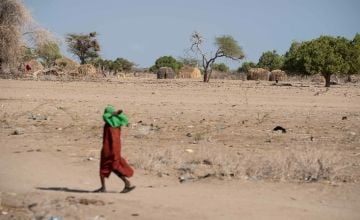
COP28 will focus on four proposed paradigm shifts
1. Fast-track the energy transition
COP28 President Dr. Sultan Al Jaber outlined the plan for this year’s conference in July, one that begins with tripling renewable energy capacity (to an output of 11,000 gigawatts) by 2030.
Dr. Al Jaber has also called for the doubling of energy efficiency measures and the doubling of hydrogen production (to 180 metric tonnes per year) by 2030, the acceleration of the “inevitable” and “essential” phase-down of fossil fuels, and for both national and international oil companies to completely nullify their methane emissions by 2030.
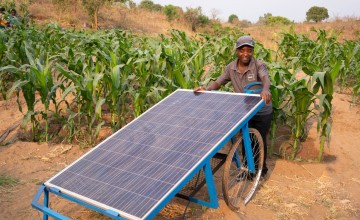
2. Fix climate finance
In 2009, governments around the world made a commitment to allocate $100 billion annually by 2020 to help low-income countries (often countries most affected by climate change) to address the impacts of global warming. However, this pledge has never been met, despite an increase in both the frequency and destruction of extreme weather events — including droughts and floods — many in countries that cannot afford to cope with their impacts.
At this point, Tyldesley says, “$100 billion should be the floor rather than the ceiling” in terms of annual climate financing. Dr. Al Jaber has also called for “comprehensive transformation” of the climate finance system rather than “piecemeal reform.” Much of this funding, he argues, should be allocated towards building climate resilience in the Global South to help prevent massive losses early and often. COP28’s Presidency has already begun to work with organizations like the International Monetary Fund and the World Bank towards other financial solutions to this funding gap. Dr. Al Jaber has also called for donors to double their contributions to adaptation finance by 2025.

3. Focus on nature, people, lives, and livelihoods
With such an ambitious COP, it’s a good chance to re-centre the reason for all of these dramatic (and at times drastic) measures to mitigate the risks posed by the climate crisis: lives are at stake.
The tireless work of many to prevent the 1.5 ºC increase of the global temperature and help communities adapt to the new aspects of reality that are not going to quickly subside (if not completely irreversible) is done to ensure both the survival of people and the natural world. Much of COP28 will include attention to some of the key elements that support holistic and sustainable solutions, including livelihoods, health, food, and resilience.
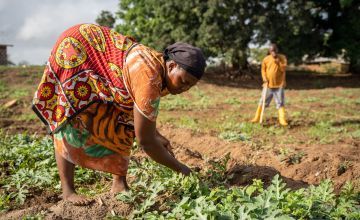
4. Full inclusivity
COP28 is also committed to being the most diverse and inclusive COP so far, including the largest-ever youth climate delegate program. There will also be a pavilion for indigenous peoples, who protect 80% of the world’s biodiversity, centering both their concerns and their knowledge about these threatened systems. Many of the injustices of climate change – indeed, the entire concept of climate justice – are the result of a privileged group of people controlling the scope and narrative of industrialization and, later, of growing attention towards the environment.
For the first time, there will also be a focus at COP on fragile contexts, highlighting the connection between conflict and climate change at a time where global conflict remains a growing existential threat.
What’s being negotiated at COP28?
This year’s negotiations will focus on a few key areas in keeping with the themes of COP28:
The Global Stocktake
One key outcome of COP28 will be the completion of the first-ever Global Stocktake, a comprehensive assessment of progress since the Paris Agreement was adopted at COP21. Research for this Stocktake has taken two years, and Tyldesley says it’s a key process for “aligning efforts on climate action, including identifying the measures to bridge any gaps standing in the way of progress.”

Global Goal on Adaptation
Since the Paris Agreement was implemented eight years ago, not much progress has been made towards defining one of its key elements, the Global Goal on Adaptation (GGA). This framework is key towards countries (especially high-income countries) doing enough to support both global adaptation efforts and particularly adaptation efforts in low-income countries (particularly those on the frontlines of the climate crisis). This could change with COP28.
The Loss and Damage Fund
Another planned outcome of COP28 is the establishment of a long-overdue Loss and Damage Fund, which would address the increasingly devastating impact of climate events. Countries agreed to establish this fund at last year’s COP27 conference, with the goal of launching it at COP28. However, negotiations have so far been stalled, with disagreements on where the fund should be hosted, who can withdraw from it, and who should contribute to it. “The entire COP28 negotiations could get derailed if developing countries’ priorities on funding for loss and damage are not adequately addressed,” Preety Bhandari, a senior advisor at World Resources Institute, told Reuters last month.
The entire COP28 negotiations could get derailed if developing countries’ priorities on funding for loss and damage are not adequately addressed.
A new $100 billion pledge
As part of the initiative to fix climate finance, COP28 delegates are expected to lay the groundwork for a new long-term goal that will replace the $100 billion climate pledge.
What is Concern doing at COP28?
Several Concern team members will be present at COP28, including representatives from our programs in Bangladesh, Haiti, Kenya, Malawi, and Pakistan.
“I think there is a lot of frustration and cynicism about this COP, but we’re doing what we can and we have a responsibility to engage and lift the voices of our partners and communities we work with,” says Suzanne Elder, Programme Director for Concern Malawi, who will attend COP28 as part of a roughly 30-person delegation including staff from Concern and our partner organizations.
In Malawi, three pre-COP summits were held, focusing especially on youth voices, to hear from the communities where we work on their major concerns and priorities. “You can really sense the frustration from across Malawi,” Elder adds of the years of failed commitments from high-income countries. “We have a responsibility to highlight those voices.”
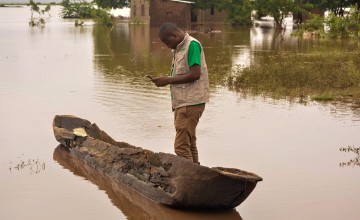
What we want to see come out of COP28
As part of our work at COP, we will be focusing on the call to increase climate finance — especially finance for adaptation. Most high-income countries are still not paying their fair share of climate finance, despite agreeing to the $100 billion pledge and Paris Climate Agreement, and the need has only grown over the last 15 years. We’re also seeing an increasing gap in costs for adaptation measures that could, in the end, save both money and lives.
Of the finance that is coming in, too little of it is reaching the local level, especially the frontlines. Additionally, much of this finance is coming in the form of loans, which only increases the debt loads of low-income countries and is not a reflection of true climate justice. We will be advocating for these points, as well as several others that relate to the inequities of climate change and the most vulnerable communities hit hardest by these events.


